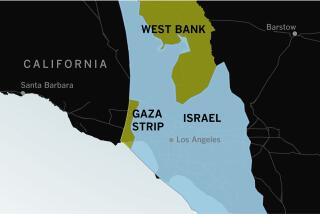Timing of Floods a Matter of Percentages
- Share via
The U. S. Army Corps of Engineers describes floods not in terms of their height but in terms of their statistically projected frequency.
A 10-year flood has a 10% chance of occurring every year. A 25-year flood has a 4% chance. A 50-year flood has a 2% chance. A 100-year flood has a 1% chance.
Ira Arzt, project manager for a study of the effects of a 100-year flood in the Los Angeles County Drainage Area, says the definition is frequently misunderstood.
For example, some think that the waters of a 100-year flood are twice as deep as a 50-year flood, or four times as deep as a 25-year flood. To predict depths of various floods, he said, the corps must use a sophisticated computer model of the area’s drainage patterns and historical rainfall and other climatological data.
The definition also does not mean that a 100-year flood has occurred in the past 100 years or will occur in the next 100.
“You can’t look at it in terms of a 100-year chunk,” said Carol Henderson, assistant project manager for the study. “In any given 100-year period, you might experience a 500-year flood. You can’t look at any particular 100-year period.
“People find just about every definition confusing. The corps has used several ways. You can say it has a .01 probability of happening.
Some, incorrectly, state that a 100-year flood is the worst flood that has a 100% chance of occurring in 100 years. Actually, the chance of a 100-year flood occurring in 100 years is not 100% or even close. It is 63%.
This result can be derived by using some simple probability theory. One starts by figuring out the probability of a 100-year flood not occurring in 100 years.
Since, by the corps’ definition, the probability that a 100-year flood will occur in any single year is .01, the probability that a 100-year flood will not occur in one year is .99.
The probability that a 100-year flood will not occur in two years is .99 x .99 = .9801. The probability for three years is .99 x .99 x .99 = .970299.
Continuing in this fashion, the probability of a 100-year storm not occurring in 100 years is .99 x .99 x . . . (100 times) . . . x .99 = .3660323.
So the probability of a 100-year flood occurring in 100 years is: 1 minus the probability of it not occurring, or 1 -- .366 = .633. Or 63%.
“The biggest question, the thing that I find is most often misunderstood,” said Henderson, “is that people think this is going to happen only once in 100 years, a logical-seeming conclusion. But it is not a specific date as to when a storm will occur. A 100-year flood could happen in any given flood season.
In fact, 100-year floods could hit two years running, but the chances are extremely small--one in 10,000.
More to Read
Sign up for Essential California
The most important California stories and recommendations in your inbox every morning.
You may occasionally receive promotional content from the Los Angeles Times.










